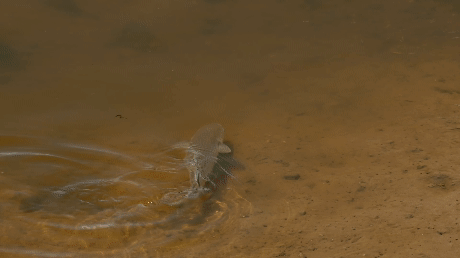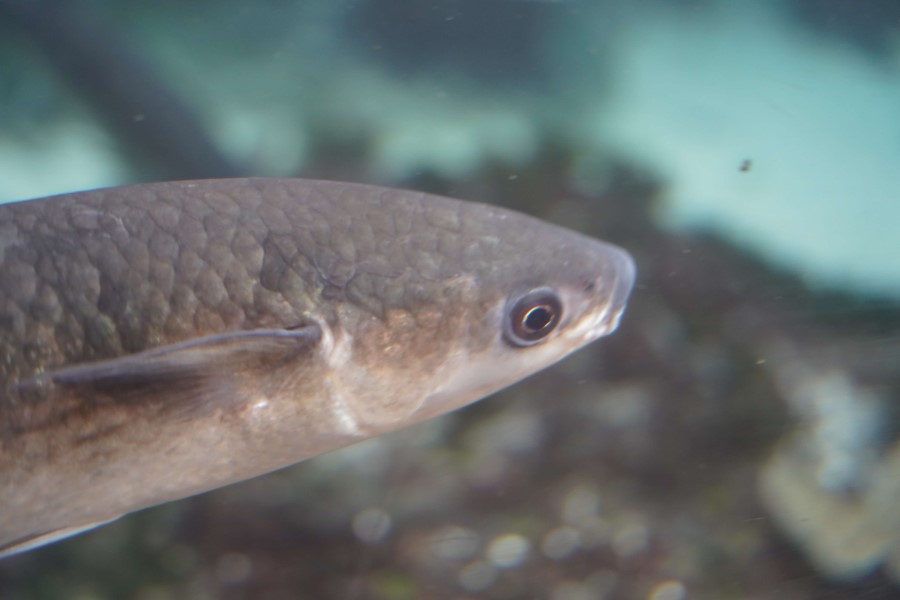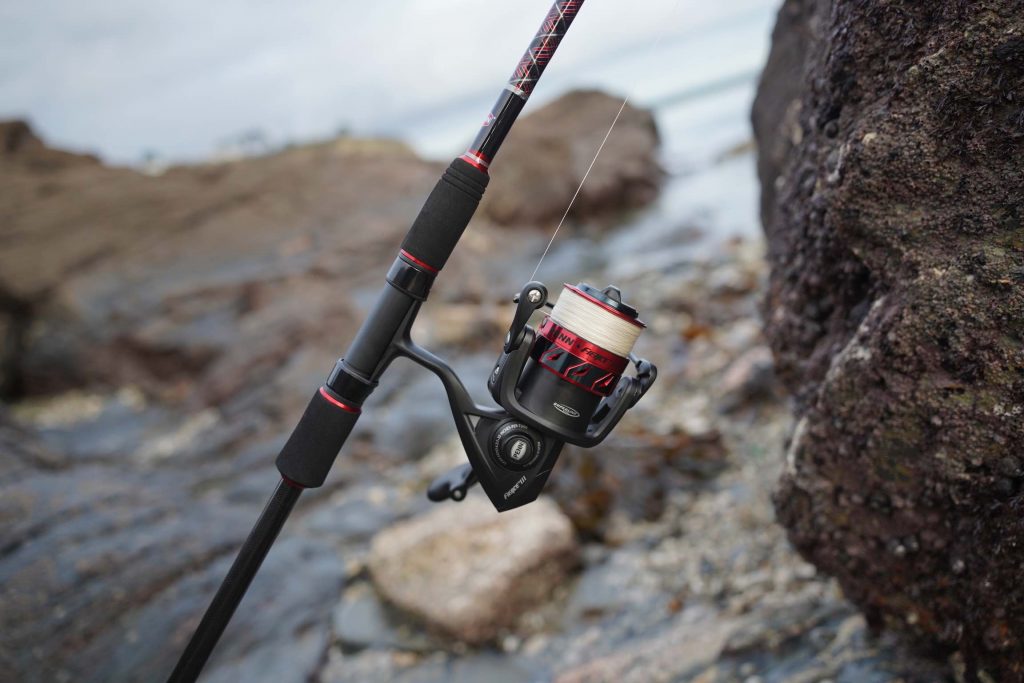Mullet fishing | 13 tips
Mullet are notoriously challenging to catch on rod and line. These fish are tantalisingly visible but are known for swimming right by past baits as if they did not exist. This type of behaviour, along with their tendency to vanish completely when spooked, has seen them dubbed as ‘grey ghosts’. The madness that overcomes many an angler can be avoided with this series of mullet fishing tips.
Fishmag is reader-supported and earns commissions from the amazon associates programme from product recommendations.

Mullet fishing set-up
This guide focuses on general principles rather than equipment, but the right gear is essential to avoid endless frustration. There are two main approaches. You can target mullet with freshwater float fishing gear, with clear freshwater floats, some split shots and size 16 hooks with 6lb-ish flourocarbon or monofilament hook lengths. Most people use bread as bait.
Otherwise, you can use a very light modern lure rod with tiny spinners tipped with ragworm or a worm imitation or again some freshwater floats. Polarised sunglasses and a landing net give you a huge advantage in spotting and landing fish.
A perfect mullet rod: Grey Ghost Specialist from Blackrock
Match with a 5000 spinning reel: Penn Pursuit 5000
10lb Braid, perfect for quickly striking mullet bites: J-Braid 10lb Mainline
Another option if you’re fishing from pontoons where you want to be more mobile and able to move on quickly is to go for a very long light lure rod. E.g. the Catana 9′ 6″ casting a max of 30g. Pair that with a 4000 size reel from Daiwa or Shimano for a lightweight mobile mullet outfit.
Then, be sure to use very light fluorocarbon leaders in your float rigs – 6lb fluorocarbon.
The great thing about the extra length in your rod is you’ll be able to fish with longer leaders / float rigs and still cast them easily. This is important as mullet are easily spooked by visible lines.
Don’t forget your Polaroids for actually seeing the mullet!

13. Mullet congregate around areas with warm water and freshwater outflows
Grey mullet are a southern species that cruise into British waters in the summertime and congregate around sheltered harbours, sandy beaches and sewage pipes. In the South West, they can be caught in winter, too. They are extremely common in estuary harbours since they are comfortable in brackish water. You can think of mullet like Mediterranean visitors on holiday, that are desperately seeking out the warmest patches of water. When estuary mudflats have warmed up, they love to soak up the heat and move over with it. In the North of the UK, mullet are known to congregate around nuclear power plant cooling outflows.

12. Mullet live lives of routine, we can observe their routines
The habits of mullet vary depending on the location, but they very often lead lives of routine, dictated by the tide and feeding at specific stages of it in specific ways. Often mullet will follow tidal debris as it floats up an estuary, feeding on the surface as they go. The good news is that mullet create a lot of disturbance on the water’s surface, so it’s possible to watch them and see at what times and states of tide they are present in specific areas.
At low tide, you can see where the mullet have been feeding by looking for impressions in the mud when they have been scraping.
If there are outflows mullet are feeding around that release at specific times, this is also a good way to catch mullet. Finally, some anglers will chum areas at the same time of day or state of tide for a few days before going fishing to create a new routine for the mullet which they can then exploit.
Learn the mullet’s routines, or create new routines for them.
11. The mullet fishing season is between May & October in the UK
The peak season for catching mullet is May to October. They are more common off sandy beaches towards the end of summer when the water is at its warmest.
Mullet live for a long time and a 40cm fish will be at least 8 years old. The different species spawn at different times of year, with Thick Lipped spawning in Spring and thick-lipped in Autumn.
10. The best ground bait for mullet makes all the difference
Traditionally, minced oily fish, finely chopped worms or fish guts would be used. Bread is more readily available and can be consumed by the angler to pass the time… It’s a good idea to feed the fish gradually, rather than in one big go, otherwise, your bait isn’t going to stand out surrounded by an abundance of free food.
9. You do need to strike with mullet
When you do get a bite you should strike promptly but not so aggressively as to spook all the fish in the area. Typically when sea fishing with floats it isn’t necessary to strike. That’s because most sea floats are large and buoyant enough to create resistance when the fish pulls them under, which sets the hook on its own. However, with tiny freshwater floats and fish that can reach 10lb, this is not the case. Striking is needed.
8. Mullet fishing demands fresh water fishing kit or LRF gear
Mullet are mostly targeted with the use of freshwater floats and freshwater quiver tip rods, which have extremely sensitive tips. LRF gear or light spinning gear also works for the same reason. The mouths of these fish are said to be mushy, but that isn’t the case. Rather, their lips are non-committal! They will sometimes inhale a little bit of bread crust or maggot and then exhale it back out again! It’s sort of like nibbling. They are notoriously fussy eaters, which seems unreasonable given that in the right mood they will happily eat from sewage outflows.

7. Don’t let these fish take you for a ride into snags
Once hooked, mullet will bolt fast for structure, like boats, ropes and all kinds of snags, so you need to be quite firm to play these fish in without trouble. Don’t just let them strip all your line because you’re scared they’ll come off the hook. These fish will do you in if you let them, I’ve seen too many anglers lost to this fish and don’t want you to join them.
6. Mullet are easy to spook with loud noises
It’s also important to avoid making loud noises and approach the fish slowly so as not to spook them if you’re fishing closer in. They can see everything and are easily spooked. You want them to be feeding and unaware.
5. Mullet species ID: Thick lipped vs Thin lipped vs Golden Grey
If you find yourself wanting to kiss the mullet, it’s a thick-lipped mullet. If it’s golden, it’s a golden grey mullet. If you don’t want to kiss it’s thin-lipped mullet. Most mullet caught in the UK are the thick-lipped variety. Thick-lipped also grow larger (<10lb) than the other two species.
The longer version is that there are three types of true mullet in British waters (the red mullet is not related to them, despite its confusing name). You have the thick-lipped mullet, the thin-lipped mullet and the golden mullet, also referred to as golden grey mullet. The difference between these species is slight but still fairly obvious – the thickness of the lips and a golden marking make each species conveniently named for identification. The diameter of the lips on a thin-lipped mullet is less than half the diameter of its eye, whereas on a thick-lipped it is considerably thicker than this.
From above, they look very similar to bass and are often mistaken for them. Sometimes bass and mullet will even shoal together, making it even harder to tell the two apart.
4. Mullet eat weird stuff and their diet affects their taste if you eat them
Mullet feed on algae, sucking up the slime that covers harbour walls and the undersides of neglected boats, as well as eating actual soil. Most of what these fish eat isn’t even digestible, but their exceptionally long intestines allow them to eat what no other fish can. Most mullet anglers will practice catch and release but if you do choose to eat the fish, make sure you’re not near a sewage outflow. Mullet caught off beaches can be delicious and will taste different from river or estuary fish.
3. The Best Bait for Mullet Fishing…
Bread, worms, maggots or even pasty crust in the west country can be used as bait. They are sort of like filter feeders and so their mouths are used quite differently from those of other fish species. It’s impressive that a fish so magnificent to look at is sustained on such a dismal diet.
2. Reach for size 16 hooks and ultra-light flourocarbon leaders
Given all this, you’re lucky to even get a kiss from a mullet, let alone a hook-up, without the right gear. However, their coyness can be overcome with the use of extremely small hooks, such as size 16 hooks, with very lightweight leaders of about 5lb. You then rig up some white bread in such a way that you cover the hook entirely and proceed to feed the mullet with tiny bits of bread, until one of the fish takes the bread with the hook in it.
1. Young mullet are far easier to catch than big mullet
Younger mullet are much less cautious and far easier to catch than older fish, and if you catch mullet in a feeding mood, they aren’t necessarily challenging to hook if you have the correct tackle and approach.
